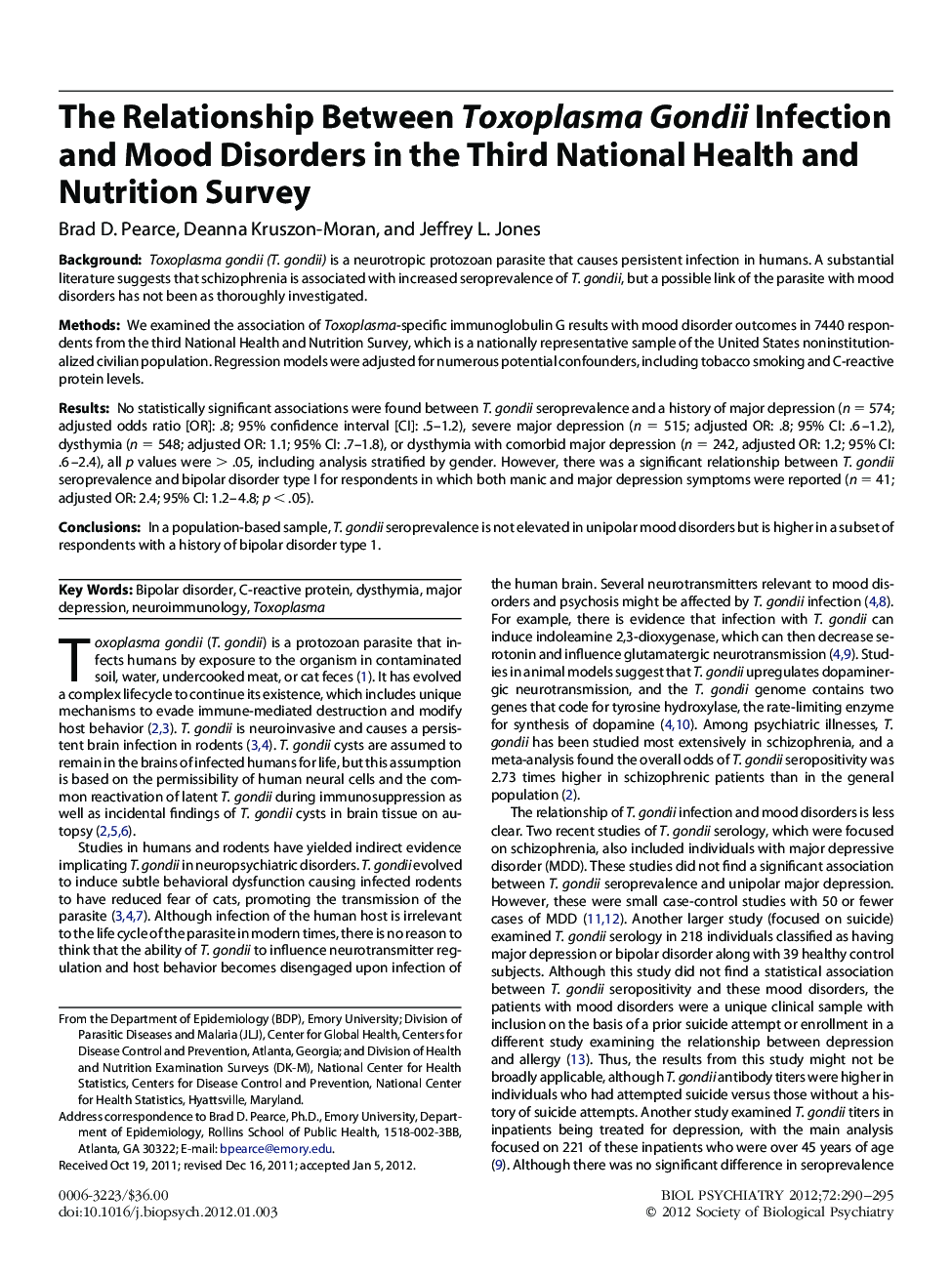| کد مقاله | کد نشریه | سال انتشار | مقاله انگلیسی | نسخه تمام متن |
|---|---|---|---|---|
| 6227681 | 1276470 | 2012 | 6 صفحه PDF | دانلود رایگان |

BackgroundToxoplasma gondii (T. gondii) is a neurotropic protozoan parasite that causes persistent infection in humans. A substantial literature suggests that schizophrenia is associated with increased seroprevalence of T. gondii, but a possible link of the parasite with mood disorders has not been as thoroughly investigated.MethodsWe examined the association of Toxoplasma-specific immunoglobulin G results with mood disorder outcomes in 7440 respondents from the third National Health and Nutrition Survey, which is a nationally representative sample of the United States noninstitutionalized civilian population. Regression models were adjusted for numerous potential confounders, including tobacco smoking and C-reactive protein levels.ResultsNo statistically significant associations were found between T. gondii seroprevalence and a history of major depression (n = 574; adjusted odds ratio [OR]: .8; 95% confidence interval [CI]: .5-1.2), severe major depression (n = 515; adjusted OR: .8; 95% CI: .6-1.2), dysthymia (n = 548; adjusted OR: 1.1; 95% CI: .7-1.8), or dysthymia with comorbid major depression (n = 242, adjusted OR: 1.2; 95% CI: .6-2.4), all p values were > .05, including analysis stratified by gender. However, there was a significant relationship between T. gondii seroprevalence and bipolar disorder type I for respondents in which both manic and major depression symptoms were reported (n = 41; adjusted OR: 2.4; 95% CI: 1.2-4.8; p < .05).ConclusionsIn a population-based sample, T. gondii seroprevalence is not elevated in unipolar mood disorders but is higher in a subset of respondents with a history of bipolar disorder type 1.
Journal: Biological Psychiatry - Volume 72, Issue 4, 15 August 2012, Pages 290-295